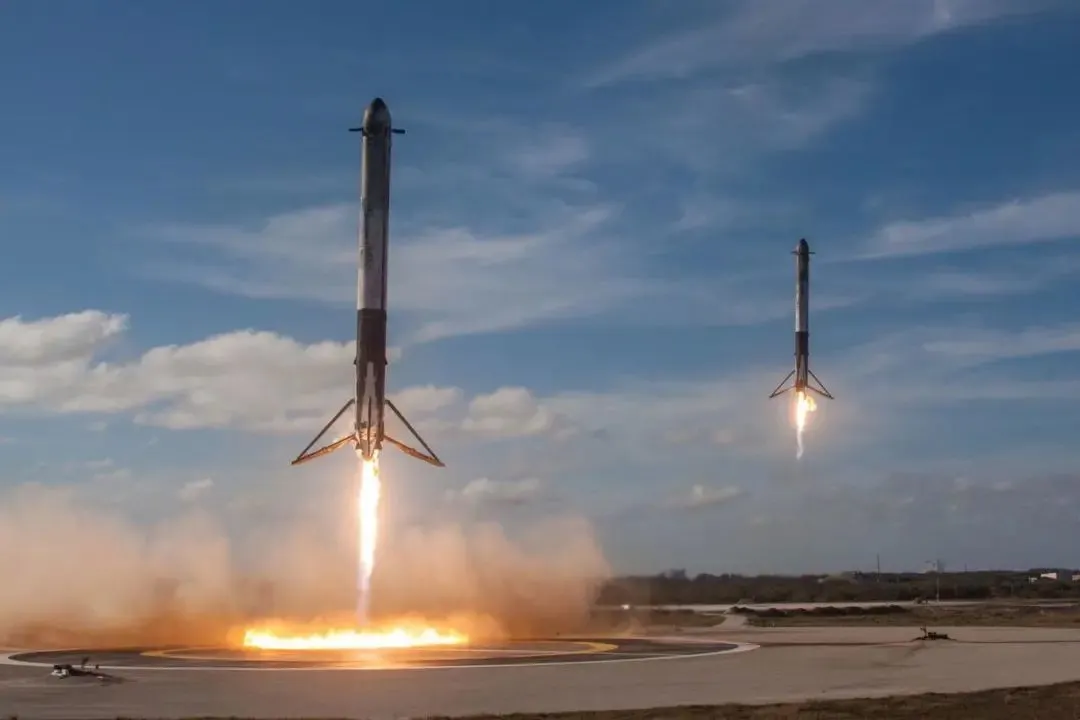01 Rockets will never be environmentally friendly
Access to space has never been easier and more frequent, enabling space tourism, missions to Mars, a NASA moon base and the development of a plethora of satellites. Plus, these new-age rockets can be powered by carbon-neutral fuels, meaning we’re now able to explore the skies without destroying the planet. Right? A recent study shows that even these revolutionary “rocket doers of good” are hurting our precious planet.
how do I say this? What is the impact on the space race?
Let’s start with the question: To understand the environmental damage of the space race, we need to know which rockets use which fuels, and how much carbon they emit.
First up is Elon Musk’s company SpaceX.
Their Falcon 9 rocket uses kerosene fuel and releases about 425 tons of carbon dioxide per launch, along with water vapor, soot, carbon monoxide and nitrogen oxides (NOx). Their upcoming Starship launches will also consume methane, producing up to 2,683 tons of carbon dioxide per launch, as well as more water vapor, soot, carbon monoxide and nitrogen oxides. Some would argue that both kerosene and methane can be made into carbon-neutral biofuels, but alas, SpaceX hasn’t done that yet.

SpaceX’s falcon heavy booster landing (methane powered) Image credit: Unsplash
Jeff Bezos’ Blue Origin, on the other hand, is quite different.
Their rockets, New Shepard and New Glenn, use pure hydrogen and oxygen. This means that when the rocket launches, only water vapor and nitrogen oxides are produced.
However, hydrogen requires a lot of energy to extract, so it still has a huge carbon footprint. In contrast, green hydrogen is healthier than regular hydrogen, given the environmental benefits of refining oil using carbon-neutral energy. Unfortunately, however, Blue Origin doesn’t use green hydrogen, which means that even though their rockets don’t emit any carbon during launch, they still have a sizable carbon footprint.

Blue Origin’s New Shepard Rocket
02 Are carbon neutral rockets all right? The answer is No
So if someone tells you that these new age rockets are carbon neutral, you can politely remind them that it hasn’t been done, and the truth is brutal and staggering.
If it’s so easy to cut thousands of tons of carbon emissions, why hasn’t it been done? The answer is cost.
To get the cheapest launch costs (and thus the most launch contracts), rocket companies are turning to “dirty” fuels that release huge amounts of carbon into our precious atmosphere.
While every rocket launch emits a lot of carbon, it’s actually not a big deal, as rocket launches are arguably rare at this stage, and they’re just a drop in the ocean compared to the total carbon emissions on our planet. The real problem is carbon emissions in the upper atmosphere.
We know the role of carbon monoxide, nitrogen oxides, carbon dioxide and water vapor in the lower and middle atmosphere. But we don’t know much about their role in the upper atmosphere, because our usual emissions don’t get that high, and none of these gases occur naturally in the upper atmosphere. However, rockets have pumped tons of material into the upper atmosphere, and the study finally found their outsized impact on Earth.

The rocket emits waste gas into the upper atmosphere Source: SpaceX
What are these carbon emissions being injected into the upper atmosphere doing? Why do you say it is “killing” the earth?
Let’s start with water vapor.
We often forget that water vapour is the most potent greenhouse gas, locking in incredible heat because clouds (composed of water vapour) dissipate very quickly, but water vapour turns into tiny ice crystals in the upper atmosphere, and then slowly Dissipate slowly, stay there much longer than it should, and retain the heat of this already warming planet.
So does carbon dioxide.
But because the atmosphere is much less dense at that height, emissions from rockets and spacecraft can cover a larger area and have a more significant impact than carbon dioxide in the lower atmosphere. This means that even if a rocket uses carbon-neutral fuel, it cannot offset the climate change caused by the carbon drive produced by the rocket.
Then there are carbon monoxide and nitrogen oxides.
Carbon monoxide reacts with oxygen and other gases, disrupting the composition of the atmosphere, an effect that is amplified in the upper atmosphere. Because a lower density means that 1g of methane can change a larger volume of the gas, causing more damage. But nitrogen oxides are also active and are a very strong greenhouse gas. However, because the upper atmosphere is less mixed with the lower atmosphere, the dreaded gas stays there longer, causing more damage.

High-altitude atmospheric pollution may be difficult to fix Source: NASA
The study also points out that this abundance of greenhouse gases will affect how different layers of the atmosphere mix. This is because they trap more heat in the upper atmosphere, causing it to “float” to the top (hot air rises) and avoid sinking through the lower layers, which can greatly affect weather patterns and climate across the globe.
All of this means that even a small amount of carbon dioxide emitted by a rocket into the upper atmosphere can be devastating and far-reaching.
This makes a pretty compelling argument: Even if any space company claims to use carbon-neutral fuels, they could still cause major damage to our precious Earth

03 Space dream at the expense of the earth
The aerospace industry is currently undergoing tremendous growth. That means every country, rocket manufacturer and satellite supplier wants to launch more rockets each year.
Currently, the environmental impact of these rocket launches is relatively minimal (compared to other carbon emission factors). But if we let the space tourism market take off, let Mars colonies flourish, and let new space stations flourish, then the number of rocket launches will increase exponentially. And the above research shows that Earth’s atmosphere cannot withstand such a large-scale launch.
If one considers that we have not yet achieved the goal of limiting climate change to 1.5°C, it is easy to see that the future space industry, and therefore the space race of the new age, will have to be massively restrained in order to save the planet.
So don’t believe the hype. Every rocket is destroying the environment, even hydrogen rockets and carbon neutral ones.
So far, we’ve only just learned how these upper-atmospheric carbon emissions are wreaking havoc on Earth, and with the space race and the space industry, the effects are bound to be broadly worse for the worse.
Will this put Musk’s Mars ambitions or Bezos’ space station plans on hold? Did they take into account the safety of the earth? At least hopefully they are discussing how to alleviate these problems, but judging from the development of space companies in recent years, we have reason to suspect that the day when a few people arrive to colonize Mars, the lifespan of Earth will not be far away.
We sighed with emotion on the development of aerospace technology, watched rockets fly into space, and witnessed billionaires spending money to make space dreams.
The desire for a small number of people to reach “heaven” is not at the expense of the earth.



GIPHY App Key not set. Please check settings